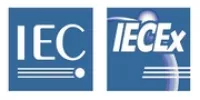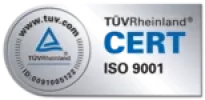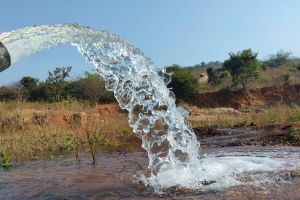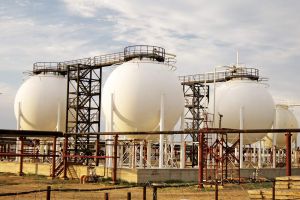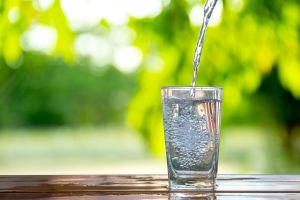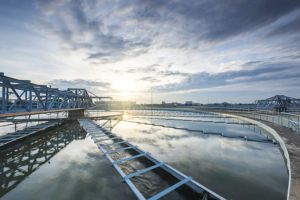QuickTOCairport
TOC COD Online Water Analyzer
TOC & COD ANALYZERS FOR AIRPORT APPLICATIONS
EASILY MONITOR DE-ICING AGENTS & RUN-WAY RUNOFF
Our LAR™ QuickTOCairport™ TOC COD water analyzer is the ultimate online measuring system for the determination of Total Organic Carbon (TOC) and Chemical Oxygen Demand (COD) for required airport applications.
Airplanes, runways and landing strips are de-iced with the help of de-icing agents. De-icing agents used in airports are typically formulated with a combination of chemicals, such as ethylene glycol and propylene glycol, to melt ice and snow from aircraft surfaces. These chemicals can be harmful to the environment and can contribute to the Total Organic Carbon (TOC) levels in the wastewater generated from airports during the de-icing process. As a result, it is important to monitor the levels of TOC in wastewater to ensure that the discharge meets environmental regulations.
One way to monitor TOC in de-icing agents is to use a specialized water analyzer, such our QuickTOCultra TOC water analyzer. The QuickTOCultra uses a combustion method to oxidize the organic compounds in the sample and measures the resulting CO2 concentration to determine the TOC concentration.
To monitor TOC in de-icing agents, a representative sample of the wastewater generated from the de-icing process is collected and prepared for analysis using the appropriate sample preparation techniques, such as filtration and dilution. The prepared sample is then introduced into the analyzer for TOC measurement.
The results of the TOC analysis can be used to determine the effectiveness of the de-icing process and to identify any potential environmental concerns related to the discharge of wastewater containing de-icing agents. If the TOC levels in the wastewater exceed regulatory limits, corrective actions can be taken to reduce the TOC levels, such as implementing alternative de-icing methods or treating the wastewater before discharge.
Here are some airport de-icing and wastewater standards:
The QuickTOCairport TOC COD water analyzer is typically used at airports to monitor the quality of wastewater generated by aircraft and other airport operations. The analyzer can measure the Total Organic Carbon (TOC) and Chemical Oxygen Demand (COD) levels in the wastewater, which are important indicators of the presence of organic contaminants.
TYPICAL APPLICATIONS
Here are some ways our QuickTOCairport TOC COD water analyzer can be used at airports:
- Monitoring Aircraft Wastewater: Used to analyze the wastewater generated by aircraft during the de-icing process, as well as other sources of wastewater such as lavatories and galleys. By monitoring the TOC and COD levels in this wastewater, airport operators can ensure that the wastewater is properly treated and discharged in compliance with environmental regulations.
- Monitoring Runoff Water: Runoff water from runways, taxiways, and other airport surfaces can contain a variety of contaminants that can impact the quality of water in nearby waterways. The QuickTOCairport can be used to measure the TOC and COD levels in this runoff water, which can help airport operators to take appropriate measures to mitigate the impact on the environment.
- Monitoring Wastewater Treatment Plants: Some airports have on-site wastewater treatment plants that treat the wastewater generated by airport operations. The QuickTOCairport can be used to monitor the quality of the wastewater before and after treatment, ensuring that the treatment process is effective and that the treated water meets environmental standards.
features & benefits
- Exact determination of TC, TOC (TRUE TOC) and TIC
- Measurement Range: 0.1-100 mg/l, 2-400 mg/l, 5-2,000 mg/l, 100-15,000 mg/l, 100-50,000 mg/l, further options available
- Automatic ranging
- Fast Response Time: 3 minutes
- Proven thermal oxidation principle
- Highest combustion temperature available (1,200°C)
- Catalyst-free
- Multi-stream measurements (optional)
- No filtration necessary
- High salt concentrations possible, up to 30% NaCl
- No memory effects
- Very low maintenance and operational costs
- According to DIN EN 1484:1997-08, ISO 8245:1999-03 and EPA 415.1
HOUSING
- IP54 (Standard)
- NEMA 4X
- ATEX Zone I
- ATEX Zone II
- IECEx
Applications
- Surface water
- De-icing water
We are the TOC Leader™
Monitor TOC, COD, BOD, TN, and Toxicity Impurities in all Types of Water
Monitor TOC, COD, BOD, TN, and Toxicity Impurities in all Types of Water
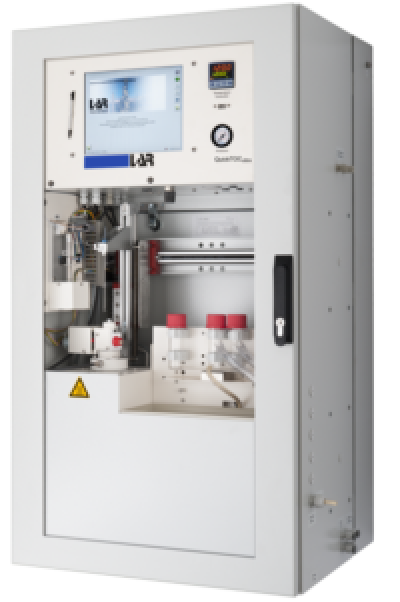
For a complete range of analytical instrumentation, applications, systems, and service options, we will work to match your needs and budget and provide the optimal, and most stable process analysis solution for your application.
SALES | TRAINING INQUIRIES
AMERICAS: info@process-insights.com
EMEAI: info.emeai@process-insights.com
APAC: info.apac@process-insights.com
CHINA: info.cn@process-insights.com
SERVICE | TECHNICAL INQUIRIES
solutions flyers
-

AGRICULTURE
-

CHEMICAL
-

ENERGY
-

FOOD & BEVERAGE
-

FLARE GAS
-

INDUSTRIAL GAS
-

LAB & RESEARCH
-

PHARMACEUTICALS & LIFE SCIENCE
-

REFINERY
-

SEMICONDUCTOR
-

SPECIALTY GAS
Surface water and de-icing wastewater should be continuously monitored
Surface water and de-icing wastewater should be continuously monitored at airports for several reasons including:
- Environmental Protection: Surface water and de-icing wastewater can contain various pollutants, such as salt, glycol, and other chemicals, which can harm aquatic life and the environment if they are not properly treated. Continuous monitoring of these water sources can help to identify potential pollution events and ensure that appropriate measures are taken to protect the environment.
- Compliance with Environmental Regulations: Airports are subject to environmental regulations that require them to properly manage and treat their wastewater. Continuous monitoring of surface water and de-icing wastewater can help airports to ensure that they are complying with these regulations and avoid potential fines and penalties.
- Operational Efficiency: De-icing operations can be costly, and airports want to ensure that they are using the most effective and efficient de-icing strategies. By continuously monitoring the water sources used for de-icing, airports can optimize their de-icing operations and minimize the amount of de-icing fluid used, which can lead to cost savings.
- Public Health and Safety: Surface water and de-icing wastewater can potentially impact the health and safety of nearby communities if they are not properly managed. Continuous monitoring of these water sources can help to identify potential risks and allow airports to take appropriate measures to protect public health and safety.

THE BUILDING BLOCKS PRINCIPLE FOR A TAILOR-MADE MEASUREMENT INSTRUMENT
The use of inert materials as well as a pump, which is installed downstream of the sample stream, prevent carryover and memory effects caused by absorption and adsorption. The automatic ranging feature ensures reliable measurements between 0.1 – 50,000 mg/l C without dilution or pretreatment of samples. This means, fluctuating loads and adhesive samples are easily analyzed.
EXACT ANALYSIS AT 1200°C
For an exact TOC measurement all carbons bonds – incl. particles – must be reliably combusted. LAR’s unique robotic system is capable of transporting and measuring a high content of solid matter without any filtration of the sample. Additionally, our ultra-high temperature method with combustion at 1,200°C guarantees the complete oxidation of the sample. This analysis results in TRUE TOC.
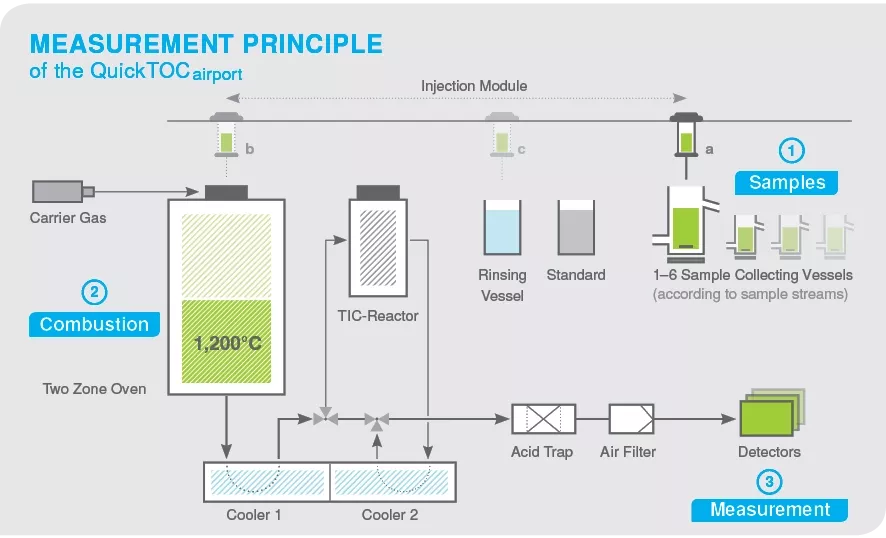
WATER ANALYZERS BY INDUSTRY
REVOLUTIONIZE YOUR WATER ANALYSIS WITH OUR LAR™ TOC WATER ANALYZER: PRECISE, RELIABLE, AND EFFICIENT
Monitor TOC, COD, BOD, TNb, and Toxicity Impurities in all Types of Water

AEROSPACE & GOVERNMENT

LAB & RESEARCH
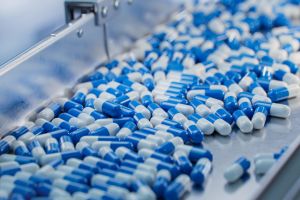
PHARMACEUTICAL & BIOTECHNOLOGY
BY WATER TYPE


